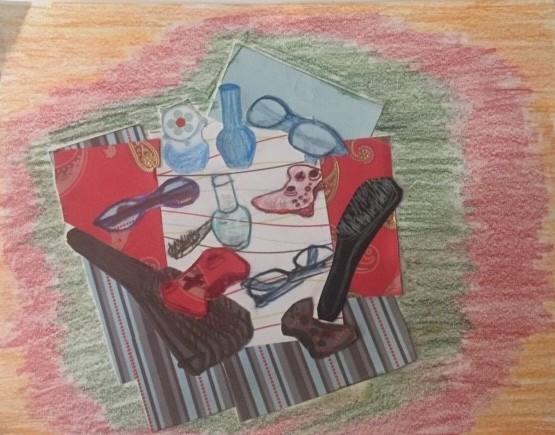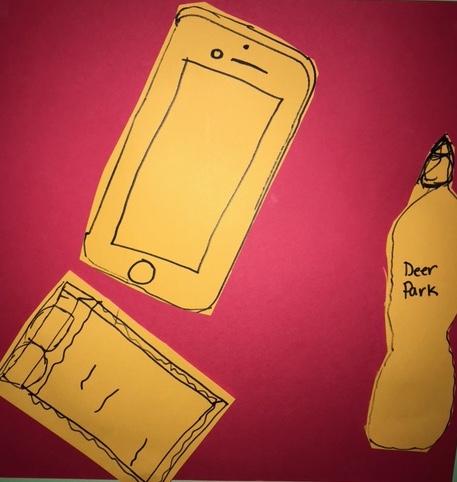When Diego Rivera was a young artist, he traveled to different countries and explored new ways of painting. After his travels, Rivera returned to his home country of Mexico, where he combined new techniques from the places he visited with the traditions of his homeland. This still life includes objects that reminded him of his home in Mexico.

Language
Look
What shapes do you see? Look for circles, triangles, and rectangles.
Do you recognize any of these objects? Which ones?
Which objects can you see from above? Which can you see from the side? Which can you see through?
Pretend you can reach inside this painting and pick up one thing. Which would you choose? What might it feel like?
Read
Not a Box (Spanish language version: No es una caja)
by Antoinette Portis
A bunny explores how a box is not always just a box.
Diego Rivera: His World and Ours
by Duncan Tonatiuh
This book tells the story of Rivera as a young boy who loved art and dreamed of making his community proud.
MAKE: Create a still life collage
You Will Need
- Heavyweight paper
- Colored pencils
- Assorted colored or patterned papers
- Scissors
- Glue stick
First, gather three to five objects from around your home. To make your still life more interesting, try to choose objects with different colors, patterns, shapes, and textures. Like Diego Rivera, you might want to include some objects that are special to you. Arrange the objects on a low table so you can see them from all sides.
One by one, draw each object. Focus on simple shapes such as circles, triangles, rectangles, and squares. Try standing in a different spot and drawing some of the items from different viewpoints—from above, below, or another side. You might draw one object on a colored piece of paper and another object on a patterned piece of paper.
Cut out all of your drawings and arrange them on a sheet of heavyweight paper. Once you’re happy with your arrangement, glue the drawings down to create a still life collage.
Vocab Bank
- homeland
- object
- pattern
- still life
- viewpoint
Download
Art Tales: Coloring and Cut-Outs booklet (PDF, 3.5 MB)
Art Tales for Pre-K (PDF, 7.2 MB)
Primeros Pasos En El Arte (PDF, 7.5 MB)
Primeros Pasos En El Arte: Colorear y Recortes (PDF, 3.7 MB)
An Eye for Art: Diego Rivera teaching resource (PDF, 9.4 MB)
Visit
Register for the Art Tales pre-K school tour
Submit Student Work
Send images of your students' projects that follow these activities - email [email protected]
You may also like

Educational Resource: Art Starters: Jacob Lawrence
A lesson for preschool to kindergarten students about artist Jacob Lawrence’s 1964 painting Street to Mbari. Students learn how to look at this painting, what you can read to learn more, how to paint a gathering place, and a list of vocabulary terms related to this activity.

Educational Resource: Art Starters: Joan Miró
A lesson for preschool to kindergarten students about artist Joan Miró’s painting The Farm. Students learn how to look at this painting, what you can read to learn more, how to create a collage, and a list of vocabulary terms related to this activity.

Educational Resource: Art Tales: Henri Matisse
A lesson for preschool to kindergarten students about artist Henri Matisse’s 1950 artwork Beasts of the Sea. Students learn how to look at this artwork, what you can read to learn more, how you can paint with scissors, and a list of vocabulary terms related to this activity.




